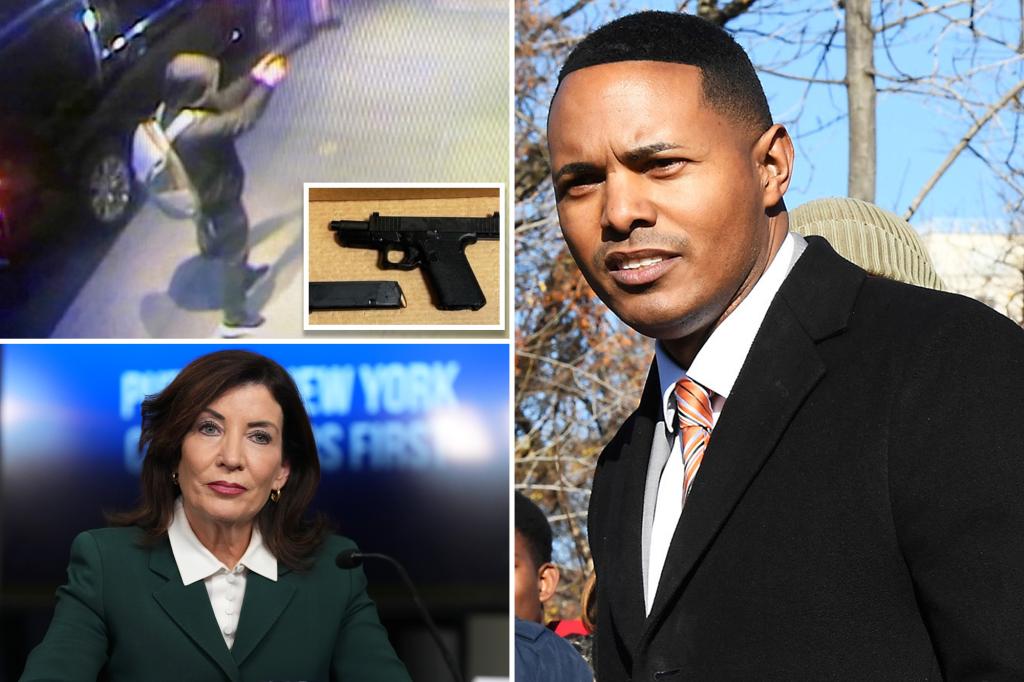The tragic murder of UnitedHealthcare CEO Brian Thompson, allegedly by a perpetrator wielding a 3D-printed “ghost gun,” has ignited a renewed call for stricter gun control measures in New York State. Bronx Representative Ritchie Torres has directly appealed to Governor Kathy Hochul to address perceived loopholes in existing state law that allow for the unchecked proliferation of these untraceable firearms. Torres’s central argument revolves around the ease with which individuals can acquire the necessary components and technology to manufacture ghost guns, essentially transforming any home into a potential weapons factory. This accessibility, he argues, poses a significant threat to public safety and necessitates immediate legislative action.
Torres’s letter to Governor Hochul highlights two specific vulnerabilities in New York’s current gun laws. The first concerns the act of manufacturing ghost guns. While the possession, sale, and transfer of these weapons are prohibited, the actual process of creating them, particularly using 3D-printing technology, remains unaddressed. This omission, Torres contends, allows individuals to legally construct ghost guns within the confines of their homes, circumventing existing regulations. The second loophole relates to a broader prohibition on the manufacturing of certain weapon types, including assault rifles, high-capacity magazines, and machine guns. This prohibition, however, fails to explicitly encompass 3D-printed ghost guns, creating another avenue for their unregulated production.
The case of Luigi Mangione, the suspect in Thompson’s murder, underscores the urgency of Torres’s concerns. Mangione, a University of Pennsylvania graduate, reportedly utilized a 3D-printed ghost gun in the alleged crime, a weapon he reportedly assembled using skills and technology readily available to the public. This accessibility, coupled with the existing legal loopholes, effectively transforms the potential for gun violence from a limited threat to a widespread danger. Torres emphasizes that the relative affordability of 3D printers and the ease of acquiring ghost gun kits online makes it disturbingly simple for nearly anyone to become a gun manufacturer, a scenario he believes demands immediate legislative intervention.
Torres’s proposed solution involves a two-pronged approach. Firstly, he calls for the explicit criminalization of manufacturing 3D-printed ghost guns, closing the existing gap in the law. This would directly address the first identified loophole, making the act of constructing these weapons illegal, regardless of intent or subsequent actions. Secondly, Torres advocates for the inclusion of 3D-printed ghost guns in the broader prohibition on manufacturing specific weapon types. This would effectively close the second loophole, ensuring that these untraceable firearms are subject to the same legal restrictions as other prohibited weapons like assault rifles and machine guns. By implementing these changes, Torres argues, New York can significantly curtail the proliferation of ghost guns and mitigate the associated risks to public safety.
The congressman’s appeal to Governor Hochul emphasizes the urgency of the situation, requesting that the proposed legislative changes be incorporated into the upcoming executive budget proposal. This inclusion would signal a prioritized effort to address the ghost gun issue and demonstrate the state’s commitment to combating gun violence. Torres stresses the importance of a comprehensive approach to gun control, leaving “no stone unturned” in the fight against gun violence, particularly in light of the growing prevalence of privately made firearms. He positions the proliferation of ghost guns as a compounding factor in the ongoing struggle against gun violence, highlighting the need for immediate and decisive action.
The death of Brian Thompson serves as a stark reminder of the potential consequences of unchecked access to firearms, particularly those that evade traditional tracking mechanisms. Torres’s call for action aims to prevent future tragedies by addressing the legislative gaps that currently facilitate the production and distribution of ghost guns. His proposed amendments to New York’s gun laws represent a crucial step towards a more comprehensive approach to gun control, one that acknowledges the evolving landscape of firearm technology and the urgent need to adapt regulations accordingly. The effectiveness of these proposed changes, however, remains dependent on their implementation and enforcement, emphasizing the ongoing challenge of balancing individual liberties with the imperative to ensure public safety.

